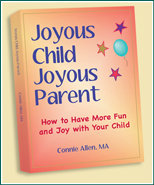Have you heard about Fulla, the Middle Eastern version of Barbie. Fulla is an 11.5 inch Barbie-like fashion doll marketed to children of Islamic and Middle Eastern countries as an alternative to Barbie. The product is designed by Synrian-based NewBoy Toys, displaying how some Muslim families prefer their daughter to dress and behave.
Her personality was designed to be "loving, caring, honest, and
respects[ing of] her mother and father. She’s good to her friends.
She’s honest and doesn’t lie. She likes reading. She likes, rather, she
loves fashion. Her dress varies depending on the country in which she is sold.
Fulla has her own line of commercial products including Fulla breakfast cereal, chewing gum, backpacks, bicycles, and even a matching prayer run and scarf. Fulla is big business.
You can see photos and read more about her at Wikipedia .


 Just a little bit about me -- I'm a coach for parents, visionary guide, insightful trainer, and powerful consultant.
Just a little bit about me -- I'm a coach for parents, visionary guide, insightful trainer, and powerful consultant.